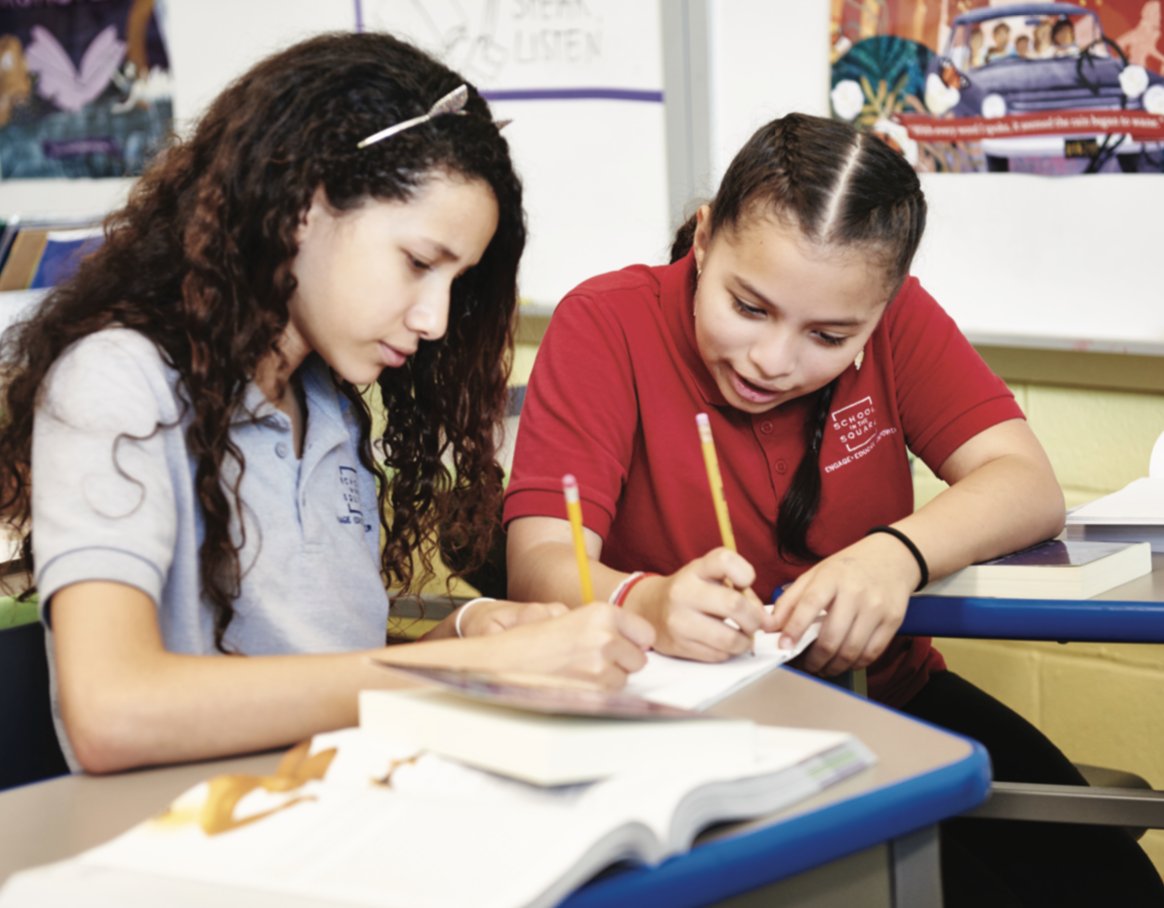
For the first few weeks of school, º‚Ω– ”∆µapp are typically rested, ready, and engaged. But as the months pass and the math skills taught are more advanced, that new-year energy wavers. So how can you keep those fall vibes going into winter and beyond?
Engagement isn‚Äôt just about grabbing º‚Ω– ”∆µapp‚Äô attention or ‚Äúmaking it fun.‚Äù When teachers build a math classroom community where all º‚Ω– ”∆µapp feel seen, respected, and even celebrated, regardless of their individual relationship with (or feelings about) math, that‚Äôs when true engagement can flourish.
Fortunately, there are many simple strategies and best practices that math educators can use to create an engaging math environment all year long.
Using math instruction to build an engaged community from day one
Research shows that math is best learned in a community—but what exactly does a “math community” look like, and what’s the best way to build one?
Teachers can create this collaborative environment using both math strategies and social strategies (and by involving º‚Ω– ”∆µapp‚Äô caregivers). In this kind of classroom, all º‚Ω– ”∆µapp feel comfortable sharing ideas, asking questions, and engaging in mathematical conversations. To make it happen:
- Create math routines. Try starting each class with an accessible math puzzle or problem of the day. Knowing what to expect reduces anxiety, making º‚Ω– ”∆µapp more likely to participate actively and start class off with a positive mindset. Routines can also be adapted to accommodate various learning styles and levels, providing all º‚Ω– ”∆µapp with entry points. This inclusivity helps every student start each class with a positive mindset, ready to learn.
- Explore problem-based learning. In math and other subjects, problem-based learning is an instructional method in which the teacher engages º‚Ω– ”∆µapp in active study through the use of meaningful problems. Rather than starting with math principles in the abstract, º‚Ω– ”∆µapp uncover them as they work toward solutions, and build problem-solving skills, together.
- Center the º‚Ω– ”∆µapp. In math communities, teachers balance delivering information with guiding º‚Ω– ”∆µapp to discover it themselves. They encourage º‚Ω– ”∆µapp to explore math concepts, make connections to the real world, and ask questions‚Äîof each other, and of the teacher.
- Encourage collaboration. Collaborative learning is known to improve academic outcomes. In math, it cultivates deeper understanding by allowing º‚Ω– ”∆µapp to discuss and explain concepts with peers, which reinforces learning and exposes everyone to diverse problem-solving strategies.
- Celebrate brilliance. Encourage º‚Ω– ”∆µapp to communicate their ideas and approaches while solving problems. Pointing out how º‚Ω– ”∆µapp may use different methods to solve the same problem can help build everyone‚Äôs confidence and willingness to jump into creative thinking, even before they know the correct answer.
- Frame mistakes as part of the process. Getting it right matters, of course. But the less concerned º‚Ω– ”∆µapp are with getting something wrong, the more willing they‚Äôll be to explore a tough problem, and to learn from their mistakes.
- Play. Yes, engagement requires more than ‚Äúmake it fun,‚Äù but games and challenges can reduce some of the fear attached to math. And math º‚Ω– ”∆µapp who play together get in the habit of supporting each others‚Äô success.
Free math resources: How º‚Ω– ”∆µapp supports teachers with engagement
and are designed to help teachers build thriving math communities fueled by deep engagement. Both programs:
- Have math routines embedded into their lesson structure.
- Give teachers and º‚Ω– ”∆µapp multiple opportunities to celebrate math strengths and see mistakes as necessary for learning.
- Prompt º‚Ω– ”∆µapp to collaborate with their peers and engage in deep math discussion.
- Make it easy for teachers to highlight student work, celebrate their thinking, and point out different paths to the same solution.
- Ask º‚Ω– ”∆µapp to both provide answers and explain their thinking.
- Provide lessons and problems that connect math to the real world.
- Give º‚Ω– ”∆µapp the chance to play with math together.
What‚Äôs more, º‚Ω– ”∆µapp Desmos Math offers a structured approach to problem-based learning, helping teachers center º‚Ω– ”∆µapp in the classroom, and helping º‚Ω– ”∆µapp learn from each other‚Äôs thinking. Each lesson includes strategies for differentiation and suggestions to assist º‚Ω– ”∆µapp who might be stuck. Many lessons also give º‚Ω– ”∆µapp the chance to design math challenges for their peers.
Celebrate the fall season with free math lessons in Desmos Classroom‚Äîincluding some of our favorite Try It! lessons from º‚Ω– ”∆µapp Desmos Math.
Just create a free for access.

- In the print lesson ! (grade 3), Mateo is warming up by making some spicy chili. Students identify multiplication and division equations that connect to the recipe (and tickle the taste buds).

- In (Algebra 1), º‚Ω– ”∆µapp head over to Fran‚Äôs Farm to help calculate the cost of a variety of pumpkins! They make sense of piecewise-defined functions by making connections among situations, graphs, tables, and equations.
- In (grade 7), º‚Ω– ”∆µapp work to understand their mathematical chances of encountering a bear (ideally not while on a fall hike)!
For more autumn-themed math experiences and additional grade levels, fall into our special Desmos Classroom !
More to explore
- Access a free preview of featuring:
- Hundreds of engaging print and digital K–12 lessons.
- Grade-level specific practice problems, Centers, and differentiation.
- Artfully designed teacher resources, including clear, step-by-step instructional moves.
- Create a free account.
